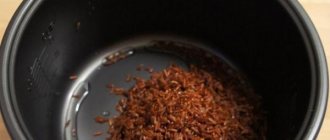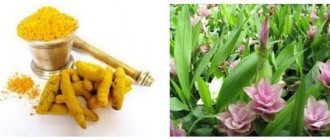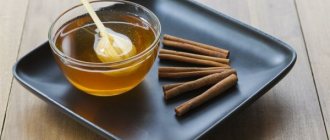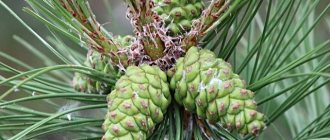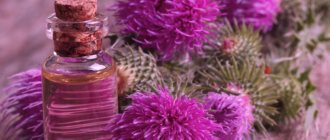Celery has been familiar for a long time, but only the ancient Greeks used the plant as decorative landscaping. After the healing capabilities of celery were discovered, it began to be used not only in cooking; the benefits of the plant and the absence of harm to the body were confirmed by alternative medicine in the treatment of gastrointestinal diseases, cardiac pathologies and in restoring the sexual health of men and women. Today there are many varieties of this plant, some using only leaves, others only roots.
Chemical composition and general health benefits of celery
Celery contains vitamin and mineral complexes, trace elements and amino acids. Among them:
- An essential amino acid is valine. Necessary for the formation and growth of muscle fibers.
- Isoleucine – corrects the concentration of hemoglobin molecules in the blood, stimulates the myocardium and corrects blood glucose levels.
- Tryptophan controls human hormonal levels and increases the concentration of the hormone of happiness.
- Aspartic acid is essential for the normal functioning of neurons and organs of the endocrine system.
The green part of the plant does not differ in its composition from the tubers. Depending on the type of vegetable, the percentage of the vitamin-mineral complex may differ slightly. 100 g of plant contains:
- 163% of the required daily value of rubidium - an antihistamine component that prevents the development of allergies,
- relieves inflammatory processes in the body and nervous tension;
- magnesium – 13% of the daily value;
- potassium and sodium (17.2% and 15.4%);
- calcium and iron (7.2% and 7.2%);
- phosphorus and vitamin K (9.6% and 24.4%).
The vitamin complex in celery is dominated by vitamin A (beta-carotene) - 4.5 mg and vitamin C - 38 mg. Also found in greens and root vegetables are folic acid (B9), B1, B5, B6 and vitamin E (tocopherol).
The beneficial properties of the plant depend on the complex effects of the components on the body:
- stimulation of the activity of the myocardium and blood flow system;
- preventing the development of infectious and viral pathologies;
- activation of the immune system;
- cleansing the arterial membranes from cholesterol tumors, which prevents the formation of systemic atherosclerosis;
- reduction of overvoltage in nerve fibers;
- decrease in blood pressure;
- restoration of normal secretion in the digestive organs;
- prevention of inflammatory and putrefactive processes in the gastrointestinal tract;
- increasing the body's absorption of protein compounds.
What is good about leaf celery?
Leaf celery has a rich vitamin and mineral composition. It is included in the menu for weight loss, dietary nutrition for gastritis, stomach and duodenal ulcers, and urolithiasis. We will tell you more about the beneficial properties of the plant below.
Chemical composition, nutritional value and beneficial properties
The table shows the vitamin and mineral composition of leaf celery (per 100 g of product).
| Substance | Content | Norm |
| Vitamin A | 750 mcg | 900 mcg |
| Beta carotene | 4.5 mg | 5 mg |
| Vitamin B1 | 0.02 mg | 1.5 mg |
| Vitamin B2 | 0.1 mg | 1.8 mg |
| Vitamin B4 | 6.1 mg | 500 mg |
| Vitamin B5 | 0.246 mg | 5 mg |
| Vitamin B6 | 0.08 mg | 2 mg |
| Vitamin B9 | 21 mcg | 400 mcg |
| Vitamin C | 38 mg | 90 mg |
| Vitamin E | 0.5 mg | 15 mg |
| Vitamin H | 0.65 mcg | 50 mcg |
| Vitamin K | 29.3 mcg | 120 mcg |
| Vitamin PP | 0.5 mg | 20 mg |
| Potassium | 430 mg | 2500 mg |
| Calcium | 72 mg | 1000 mg |
| Silicon | 2.9 mg | 30 mg |
| Magnesium | 50 mg | 400 mg |
| Sodium | 200 mg | 1300 mg |
| Sulfur | 6.9 mg | 1000 mg |
| Phosphorus | 77 mg | 800 mg |
| Chlorine | 26.8 mg | 2300 mg |
| Iron | 1.3 mg | 18 mg |
| Iodine | 7.5 mcg | 150 mcg |
| Cobalt | 0.86 mcg | 10 mcg |
| Manganese | 0.103 mg | 2 mg |
| Copper | 35 mcg | 1000 mcg |
| Molybdenum | 5.4 mcg | 70 mcg |
| Selenium | 0.4 mcg | 55 mcg |
| Fluorine | 4 mcg | 4000 mcg |
| Chromium | 2.1 mcg | 50 mcg |
| Zinc | 0.13 mg | 12 mg |
The nutritional value:
- calorie content - 12 kcal;
- proteins - 0.9 g;
- fats - 0.1 g;
- carbohydrates - 2.1 g.
Benefits and harms
Useful properties of leaf celery:
- relieving inflammation;
- protecting cells from the negative effects of oxidative processes;
- prevention of cancer development;
- removal of toxins, radionuclides, nicotine;
- immune support;
- acceleration of the breakdown of fats, proteins and carbohydrates;
- increased sexual desire;
- strengthening blood vessels;
- normalization of blood pressure;
- reducing bad cholesterol levels;
- increased hemoglobin;
- eliminating signs of allergies;
- laxative effect;
- general toning of the body;
- removing excess fluid from tissues;
- prevention of Alzheimer's disease;
- regulation of metabolism;
- rejuvenation of the body;
- reducing the level of carcinogens;
- regulation of the menstrual cycle;
- reduction of unpleasant symptoms of menopause.
Leaf celery is not recommended for pregnant women due to the risk of contraction of the smooth muscles of the uterus. If you are breastfeeding, you should hold off on using this product as it changes the taste of the milk.
Greens are contraindicated for people suffering from gastritis with high acidity and urolithiasis (with large kidney stones).
Petiole celery
The petiole type is succulent shoots (stems) of a white, reddish or light green hue. This type of vegetable is grown to obtain juicy and tender cuttings. Their taste depends on the color of the stems: white and light green ones are sweet, while green and reddish ones have a slight bitterness. Due to the presence of coarse fiber and minimal calorie content, they become an important component of dietary nutrition. The plant is used in salads, for making juice or preparing side dishes for main courses.
The rich vitamin and mineral composition helps improve vision, normalize blood pressure and sleep. Also, frequent consumption of celery is good for the health and beauty of women - libido increases, the condition of the skin, hair and nails improves. The vegetable has a positive effect on the male reproductive system - libido increases, and dishes made from it are a preventive measure for prostatitis.
What does petiole celery look like?
So, what does petiole celery look like? Petiole celery consists of 8 - 12 erect, highly thickened leaf petioles with a wide base, connected at the lower level of the leaf rosette.
The length of the stems of petiole celery is 24 - 30 cm, thickness 2 - 4 cm.
Celery greens look similar to parsley, only lighter and larger, they have a sharp, piquant aroma.
Celery stalks come in white, green and even red colors. White celery has a more delicate taste, it is stored longer, and therefore is more valuable. Petiole celery has a pleasant specific aroma.
Now you know what stalked celery looks like, and you can easily find it on store shelves.
Celery root and benefits of the root
The root variety is a round shaped root vegetable that is most commonly used in cooking and alternative medicine. The healing properties of the root vegetable are comparable to ginseng. Eating vegetables increases hemoglobin levels and lowers blood pressure, improves metabolism and well-being. The high content of vitamins and minerals prevents the development of tumors in the body. A particularly useful vegetable for the health of older people, as it has a positive effect on joints and improves metabolic processes in the body. In addition, the root vegetable normalizes the functioning of the nervous system, relieves stress and irritation, and also improves attention and memory.
Petiole celery in cosmetology
We have all known for a long time that celery is used in cooking, in folk medicine, and in dietetics, but not everyone knows about the use of petiole celery in cosmetology. But even the beauties of ancient Greece used the properties of this plant to take care of themselves.
There are many types of different masks and tonics using petiole celery. There are nourishing, cleansing, whitening, and rejuvenating masks for different skin types; masks for face, body, hair, nails.
Such celery masks rejuvenate the skin of the face, strengthen hair and nails, stop aging, and increase the overall tone of the body.
So we can confidently talk about the benefits of celery not only for weight loss, but also for beauty.
Leaf celery
Leaf is the most flavorful type of celery. The leaves are used for salads, salad dressings and making green sauces for meat or fish dishes. The plant bears fruit until late autumn.
In addition to excellent taste, this species also has medicinal properties. Thanks to the presence of retinol, the condition of bones and teeth improves, and hormonal levels are normalized. Thiamine is necessary for the proper functioning of the nervous and cardiovascular systems. According to scientists, vitamin B2 (0.05 mg) prevents the appearance of malignant tumors. The leaf variety is a preventative against diabetes, as the manganese and magnesium contained in the composition regulate blood sugar levels.
Petiole celery
The petiole variety is also called salad variety. It is distinguished by overgrown fleshy stems 3-4 cm thick (it does not form a root crop).
One thin stalk of celery contains 6-7 percent of the daily dose of vitamins A and C and large amounts of vitamins B1, B2, K and PP.
Celery is rich in other beneficial substances:
- iron
- potassium
- magnesium
- phosphorus
- folic acid
- carotene
- phytoncides.
Due to the fact that the beneficial substances in celery are perfectly balanced and easily digestible, celery has a strong cleansing, rejuvenating and general strengthening effect on the body.
Main contraindications and possible harm of celery
Celery can cause side symptoms and cause harm if the amount consumed is not controlled. The following negative reactions in the body are also possible:
- the movement of stones along the urinary ducts is provoked (in the presence of urolithiasis);
- the risk of developing epileptic seizures of varying intensity increases;
- The root vegetable contains high concentrations of purine, which helps increase the uric acid index in the body, which can trigger the development of gout and salt deposits in the joints.
If the stomach has high acidity, the root vegetable and leaves should be used with caution so as not to stimulate excessive production of gastric juice.
The main contraindications to the use of celery in cooking and alternative medicine are:
- allergy to components in the plant;
- hypertensive crisis;
- thrombophlebitis and varicose veins;
- stomach ulcer, bleeding in the digestive organs;
- kidney stone disease in the acute phase;
- colitis and enterocolitis;
- cholecystitis and gallstones;
- pancreatitis;
- advanced age;
- lactation.
Benefits of celery for men
The benefits of celery for men are also great. Men have known about the amazing beneficial properties of celery since the times when this plant was considered the only remedy for impotence.
The chemical composition of celery contains the male sex hormone - androsterone, which helps increase potency, and calcium, which synthesizes sex hormones in men.
The most common and painful problem for men older than middle age is prostatitis, and, as a consequence, weakening of potency.
The benefit of celery for men is that it activates the synthesis of testosterone, as a result of which male potency increases.
Celery has a positive effect on blood supply and trophism of the prostate gland. It is indispensable for those who suffer from chronic prostatitis and for the prevention of diseases of the genitourinary system and reproductive organs.
In support of the benefits of celery for men, there is a popular proverb dedicated to the tonic and stimulating effect of celery: “Celery for dinner - the wife is happy with her husband.”
Celery is rich in phytohormones that attract the attention of women. With the constant use of celery in food, the sweat glands of men secrete substances that cause sexual desire in women.
Using celery for weight loss
Celery is a plant that is a storehouse of vitamins and mineral compounds, but has low calorie content, which is quite important for weight loss. With its help, the cholesterol index in the blood decreases, as well as the volume of fat in the subcutaneous tissue, and toxic elements and toxins are removed from the body. The plant can reduce appetite and convey a feeling of fullness. Burning of fat deposits occurs slowly, the body does not experience stress, and the rich vitamin and mineral composition fills it with energy and vigor. In addition to the diet, you can prepare the following fat-burning composition:
- 0.5 kg cuttings or root;
- 2 pcs. lemon;
- 200 ml honey;
- the cuttings need to be crushed using a meat grinder and mixed with honey;
- After steaming with boiling water and removing the seeds, the lemon is also passed through a meat grinder;
- mix all ingredients until smooth and leave in the refrigerator for 3 days;
- You need to take 1 tbsp three times a day after meals. l.
For obesity, the most effective herbal remedy for weight loss is celery juice:
- Pass the cuttings and leaves in a juicer and drink 1 tbsp three or four times a day. l. 7 days;
- You need to take the juice 45-60 minutes after eating;
- After a week's course, a break of 15-20 days is necessary, after which the therapy must be repeated again.
Also, for urological pathologies, it is necessary to consume 100 g of the green part of the plant per day.
Root celery
Root celery is grown for its thick, rounded roots that resemble the shape of a large apple, but the spicy, finely dissected leaves are also edible. Its snow-white pulp has a pleasant aroma, reminiscent of parsley.
In addition to essential oil and vitamins, the root of the plant contains:
- asparagine
- choline
- acetic and butyric acids
- furocoumarins, which have anticancer activity.
The root vegetable is used raw for salads and hash, it is also used to make cutlets, and added to any meat and vegetable soups.
100 g of pure, ready-to-use celery tuber contains 320 mg of potassium, 9 mg of magnesium, 68 mg of calcium, 0.15 mg of manganese, 0.53 mg of iron, 0.31 mg of zinc, 80 mg of phosphorus and sodium.
If you are going to heat-treat the root vegetable, keep in mind that the more it is crushed, the more flavor it will release. To preserve vitamins in celery root when cooking it, you should:
- put into boiling water
- and cook in a tightly closed container.
One thin stalk of celery contains 6-7 percent of the daily dose of vitamins A and C and large amounts of vitamins B1, B2, K and PP
The remaining liquid can be used to make sauces and soups as it is rich in nutrients. Poaching in its own juice instead of frying will preserve the beneficial substances of the celery root. And from the stewed root you can make a vitamin puree.
The benefits of celery for women and men
Regular inclusion of the plant in the menu allows women and men to have a slim figure, beautiful skin and good health. In addition to the fact that celery corrects the balance of salts and water in the body, as well as the content of lipids in the blood and subcutaneous tissue, it restores hormonal levels.
In addition to restoring hormonal balance, celery is effectively used in the treatment of pathologies of the bladder and urinary organs:
- combine crushed seeds and honey in equal proportions;
- use 1 tsp. three times a day.
In gynecology and pregnancy
In gynecology, celery is most often used in the treatment of painful or heavy menstruation, or to alleviate the symptoms of menopause. Seeds help with heavy menstrual flow.
Infusion of seeds using cold technology to reduce pain during menstruation:
- 1 tsp. seeds + 400 g of chilled boiled water;
- leave to brew for 8-10 hours;
- filter and take 100-150 ml three to four times a day.
This infusion has a diuretic effect and, with prolonged use, can negatively affect the functioning of the kidneys.
An infusion of the seed using the hot method is effective in menopause and pain during menstruation:
- ½ tsp. crushed seeds, pour 200 ml of boiling water;
- leave in a thermos for 8-10 hours;
- filter and drink 4 times a day, 1 tbsp. l. 20-30 minutes before meals;
- duration of the therapeutic course – 27 calendar days;
- It is advisable to conduct four courses per year.
Roots, petioles and leaves, on the contrary, increase blood flow during scanty menstruation. They contain the component apiol, which stimulates uterine contractions. Celery is contraindicated in the 3rd trimester of pregnancy due to the plant’s effect on the smooth muscle fibers of the uterus (intensifies its contractions). There is a high risk of premature labor pains. In the 1st and 2nd trimesters, it can be consumed in strictly dosed doses due to the formation of increased accumulation of gases in the gastrointestinal tract, which negatively affects the formation of the fetus and the condition of the pregnant woman. If women after 35-38 years of age undergo 4 therapeutic courses per year with the seeds of this plant, then the course of menopause will occur unnoticed.
In cosmetology
In cosmetology, the plant is used as part of cosmetic masks to improve the condition of the skin and hair. Facial cleansing mask for oily epidermis:
- 1 tsp. dry crushed celery leaves;
- 1 tsp. sorrel leaves;
- 1 tsp each parsley and dill;
- 1 tsp each chamomile and sage;
- 1 tsp. calendula;
- 200 ml boiling water.
Mix all ingredients and add water. Leave for 60 minutes. Take 2 tbsp. l. infusion and mix with 1 chicken protein. Beat until smooth and apply to face and décolleté. After the first layer has dried, reapply the mask. Leave for 15-20 minutes and rinse with running water.
Face rejuvenation mask:
- 2 tbsp. l. crushed plant petioles;
- 150 ml milk;
- bring the broth to a boil and let it sit until it cools;
- apply to skin for 15 minutes;
- rinse with cool water.
For men's health
Regular consumption of the root helps maintain men's health and vitality. For men, celery can be used to increase potency. Juice recipe:
- 100 ml celery juice;
- 25 ml apple juice;
- mix everything and consume before intimacy.
The juice is also used for prostate adenoma:
- mix juice and organic honey in equal proportions;
- take this mixture twice or thrice a day, 2 tbsp. l. 15-20 minutes before eating;
- course of therapy – 30 days;
- after a month's break, repeat therapy.
For prostatitis, you can also take 2 tsp. juice 3-5 times a day to relieve painful symptoms.
Benefits for slimness
Celery root is one of the most effective foods in the fight against excess weight. Fiber, contained in large quantities in the plant, makes it possible to effectively cleanse the intestines and thereby prevent the formation of excess fat and the deposition of harmful substances. Manganese and choline contained in the plant have a positive effect on accelerating metabolism and preventing obesity.
The vegetable effectively removes toxins from the body, improves the absorption of nutrients in the gastrointestinal tract, which helps you eat less food and feel full faster, with smaller portions of food. The plant stops the growth of putrefactive bacteria in the intestines, removing toxins and improving overall physical condition.
Celery root, benefits: due to its low calorie content, the product can be consumed without the harm of receiving extra calories. At the same time, it gives a feeling of satiety and saturates with vitamins and minerals. By influencing the hormonal system, the plant improves and restores metabolism and gives additional energy to the body.
Medicinal recipes and use in folk medicine
In folk medicine, both the root and leaves of the plant are used to prepare decoctions, infusions and lotions. The choice of dosage form depends on preference and the nature of the disease.
Juice
Celery juice reduces body weight and helps get rid of cellulite; it also has a diuretic effect with a cleansing effect. A freshly prepared drink calms an overexcited nervous system and reduces high fever. Helps get rid of the problem of chronic constipation, improves the functioning of the gastrointestinal tract and cleanses the intestines of sludge. The process of preparing the product is simple - pass several washed cuttings of the plant through a juicer. You need to drink juice twice or thrice a day, 80-150 ml.
Decoction and infusion
A decoction of the root is used to improve the functionality of the digestive organs and for the treatment of gastritis and ulcerative pathologies:
- 20 g of crushed root + 400 ml of boiling water;
- cook over medium heat for 5-7 minutes;
- leave for 7-9 hours;
- after infusion, filter the liquid;
- You need to drink 3 times a day before eating 1-2 tbsp. l.
Root decoction for diabetes:
- 20 g of crushed root + 200 ml of boiling water;
- simmer over very low heat for 15 minutes;
- after filtration, drink 3 tbsp. l. three to four times a day.
Take the product with caution and observe the body's reaction.
An infusion of the root is used to cleanse liver cells and arterial membranes, for allergies, neuroses and neurasthenia:
- 2 tbsp. l. root + 200 ml boiling water;
- leave for 2-2.5 hours and filter;
- take 70 ml 15-20 minutes before meals three times a day.
External use
For external use, you can make lotions based on the juice for muscle and joint pain, for injuries or sprains of the limbs. Lotions recipe:
- 100 ml juice;
- 100 ml vinegar;
- 1 g salt;
Mix all components and soak a gauze pad with this mixture and apply to the affected areas. The napkin must be moistened every 45-60 minutes.
For boils and purulent wounds, it is necessary to apply a paste prepared from leaves and cuttings. The components need to be ground in a meat grinder and applied twice or thrice a day to the inflammation of the skin.
You can also make the following ointment for abscesses:
- mix plant juice and cow’s butter (or goose fat) in equal proportions;
- Apply to the site of the abscess 4-5 times a day.
Essential oil
Essential oil can be obtained from any part of the plant. The most valuable oil is obtained from its seeds (this product can be purchased at any pharmacy chain). It is used for kidney pathologies. You can also make the oil at home and use it for anti-cellulite massage: pour 20 g of the seed into 250 ml of olive oil and leave at room temperature for 15-20 days.
Essential oils help remove toxic elements and excess salt from the body, so it is recommended to use them for arthritis, rheumatic pathologies and gout.
From salts
There are several recipes using this plant for salt deposits on articular and skeletal bones. Recipe:
- 40 g of crushed root + liter of cooled boiled water;
- leave for 8-9 hours;
- after filtration, drink 1 tbsp. l. three times a day.
Seed infusion:
- 1 tbsp. l. seeds + 400 ml water;
- leave for 5-6 hours;
- filter the infusion and drink 1 tbsp. l. daily.
You can also drink juice according to the following scheme: three times a day, 2 tsp. before eating.
For rheumatism
To treat joint pain, arthritis of rheumatoid and non-rheumatoid etiology, gout, you can use an infusion based on root vegetables. Recipe:
- 1 tbsp. l. chopped root vegetables;
- 400 ml boiled water;
- mix the components and leave for 4 hours;
- After settling, filter.
The infusion should be drunk 25-30 minutes before meals, 2 tbsp. l. three times a day.
Cold method of infusing root vegetables:
- 1 tbsp. l. tubers;
- pour 400 ml of water;
- let it brew for 5-6 hours;
- drink 100 ml three to four times a day.
For allergies
To treat allergies of various etiologies, you can use these recipes:
- recipe No. 1: 2 tsp. drink freshly squeezed juice half an hour before eating three times a day;
- recipe No. 2: 2 tbsp. l. crushed tubers, pour 200 ml of cold water and let stand for 2.5 hours, filter and consume 70 ml twice or thrice a day;
- recipe No. 3: 1 tbsp. l. crushed tubers + one and a half liters of boiling water, leave to infuse for 4 hours and strain the infusion, for hives, drink 1 tbsp four times a day. l.
For insomnia
Celery will help in the treatment of neuroses and insomnia. To treat insomnia, use the following infusion: 35 g of crushed roots should be poured with a liter of cold water and left for 8 hours. After the infusion is filtered, it must be drunk 3 times a day, 1 tsp.
To treat neurological pathologies, you can prepare tea:
- ½ tsp. dried plant leaves;
- 100 ml boiling water;
- let the tea brew for 5-7 minutes and drink it before bed;
- to improve the taste you can add ½ tsp. honey
How to use celery for medicinal purposes
Celery is widely used in the treatment of diseases. First of all, to cleanse the blood and the entire body. It is useful to drink juice, tinctures and decoctions in the presence of ulcers of internal organs, colitis and gastritis.
To prepare a healing drink, a glass of dry celery raw material is infused in a steam bath for 2 hours. Afterwards, the tincture is filtered and drunk throughout the day.
If you have bronchial asthma or problems with the spine, you can prepare a healing infusion from the roots. 35 g of dry raw materials are poured with a liter of boiling water and left in a thermos for about 8 hours. Every day, 4 times a day, you should drink 2 tablespoons of tincture.
To eliminate allergy symptoms, chopped celery is poured with boiled cold water and left overnight. The next day, the mixture is drunk in three doses, before meals.
To reduce blood glucose levels, add 20 g of roots to 250 ml of water and boil over low heat for no more than 15 minutes. The decoction is consumed three times a day, in small portions - 3 tbsp. l.
Freshly squeezed celery juice is ideal for eliminating painful symptoms of the menstrual cycle.
Common questions about celery
- Can celery be used in baby food? – If the child has no allergies, celery can be given from 12 months. You can diversify the children's menu by preparing first courses, adding a small amount of juice to your child's favorite juices and purees. An excellent vitamin salad for a child would be this mix: grated apple and celery root, finely chopped nuts, raisins and dried apricots. Pour yogurt and add a spoonful of honey. Before introducing a plant into the menu for the first time, you should definitely consult a pediatrician.
- How many calories are in a fresh vegetable? – Celery is a low-calorie plant, so it is effective in dietary and healthy eating. 100 g of plant – 32 kcal.
- Are the beneficial properties of celery preserved after heat treatment? – Celery retains all its beneficial properties, vitamin and mineral complex, both in its raw form during long-term storage and after heat treatment. Therefore, the product can be boiled or stewed without fear that the beneficial properties will disappear.
- How to properly store a vegetable so that it does not lose its medicinal properties? – To use the plant all year round, you need to know how to preserve it correctly: store the tubers in the basement under a thick layer of dry sand, the temperature in the cellar should not be lower than 0 and higher than 2-3 degrees, shelf life up to 9-10 months; the tubers can also be thoroughly cleaned and cut arbitrarily, placed in boxes or plastic bags and frozen; The green part of the plant must be washed and finely chopped, also placed in bags and frozen.
Celery is a plant with a unique composition of components that are used in the treatment of many pathologies of the human body - from the treatment of joints and allergies, to impotence in men. If you consume 100 g of the plant 3-4 times a week, you can get rid of many diseases.
Source
Other useful and medicinal plants
Useful properties and contraindications of noni, how to use
How to use kupena, medicinal properties and contraindications
Composition of parsley and properties, benefits and harms
Comfrey - beneficial properties and contraindications
Useful properties of celery
Regular consumption of celery is very beneficial for health. The product helps saturate the body with vitamins and microelements.
The beneficial properties of celery when consumed regularly are as follows:
- Strengthens the walls of blood vessels, increases their elasticity. With the help of celery, it is possible to normalize the functions of the heart and blood vessels. The product helps prevent the occurrence of atherosclerosis.
- Stimulates the functioning of the digestive organs, copes with the processes of decay and inflammation in the intestines, improves appetite and normalizes the digestion of food.
- Removes toxic substances, waste and excess fluid from the body. Stem celery copes with swelling and restores kidney function.
- Prevents the formation of tumors.
- Helps cope with insomnia and other consequences of stressful situations.
- Activates beneficial bacteria. This helps to avoid the development of intestinal dysbiosis.
- Improves memory. When consuming celery 3-4 times a day for a week, it is possible to double memory functions.
- Cleanses the kidneys and joints of oxalates. Using this remedy, it is possible to avoid the accumulation of new stones.
- Cleanses the liver. This effect is achieved only when celery is consumed fresh.
- Reduces blood pressure parameters. This effect is achieved due to its diuretic properties.
- Helps cope with increased fatigue, stimulates the recovery process after training.
Another important property of stem celery is considered to improve sexual function. The plant is an aphrodisiac. It helps increase libido in women and potency in men. The product also helps cope with menstrual pain.
Petiole celery is of great benefit to older people. The effect of consuming this product on reducing cholesterol and blood sugar has been established. This helps to avoid the occurrence of atherosclerosis, diabetes and cardiovascular pathologies.
The product helps cope with joint inflammation. These include arthritis, arthrosis, rheumatism. Substances that are present in celery stalks have a diuretic effect. With their help, it is possible to get rid of uric acid crystals. This is useful for people suffering from cystitis or other lesions of the genitourinary organs.
Essential oils that are present in celery seeds help cope with pain. Coumarins contained in this product successfully eliminate headaches.
It is also recommended to eat celery for constipation, as it has a slight laxative effect. The increased fiber content helps improve intestinal microflora and stimulate the elimination of harmful substances.
Celery harm and contraindications
It may seem that celery is a real panacea for all diseases and problems. But the plant still has contraindications for use.
It is unacceptable to eat celery if you have thrombophlebitis or varicose veins. It is not allowed to use it if you have epilepsy or kidney stones. Exacerbation of chronic diseases is also an absolute contraindication to its use.
It can increase flatulence and is not recommended for use for hemorrhoids.
Having an allergy to any plant is a reason to consult a doctor before consuming celery.



